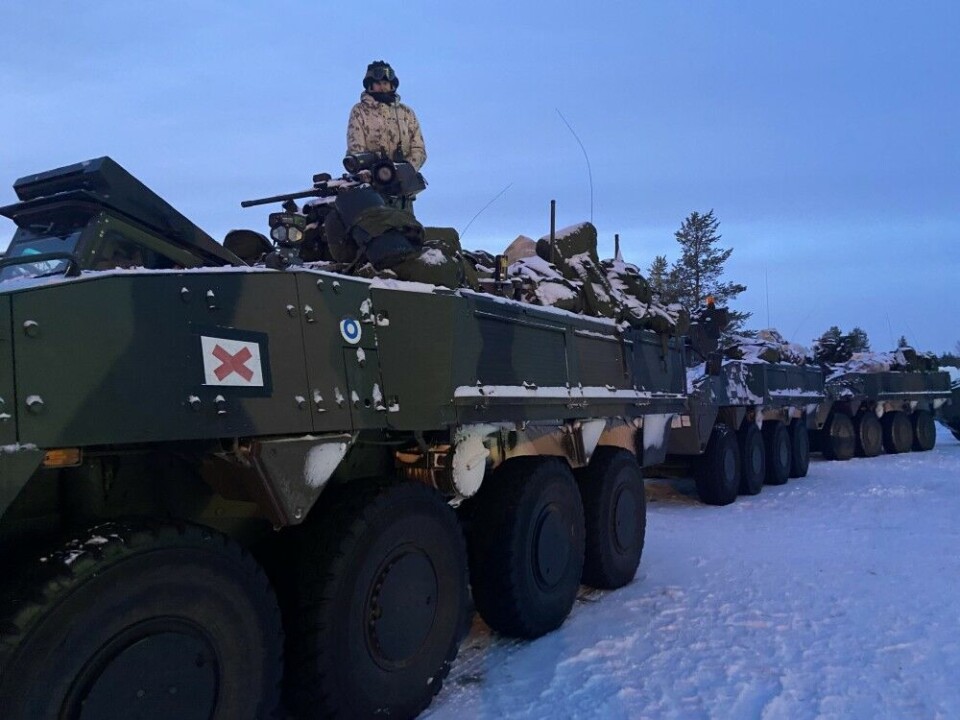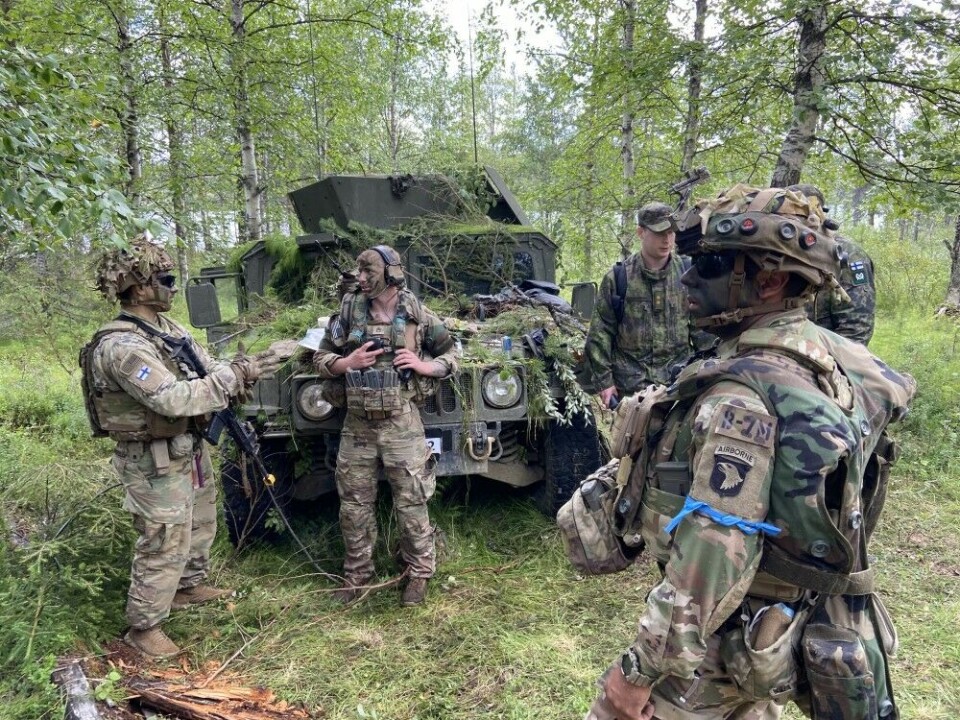
Nato troops will be stationed in Rovaniemi, Sodankylä
Nato’s Forward Land Forces (FLF) will be stationed in Rovaniemi and Sodankylä, Finnish Defence Minister Antti Häkkänen (NCP) confirmed at the Nato defence ministers’ meeting in Brussels on Thursday.
“As far as Finland’s presence in Nato is concerned, things are progressing well,” Häkkänen stated.
The FLF units are Nato troops stationed in allied countries during peacetime, conducting joint training and exercises with national forces. Yle previously reported on the planned FLF deployment to Rovaniemi and Sodankylä in September.
According to Janne Kuusela, Director General at the Ministry of Defence, the presence of FLF troops in Finland provides significant added value to the country’s defence capabilities.
According to Kuusela, if Finland were to face a military threat or if the security situation in its vicinity deteriorated significantly, allied troops would be able to offer support with pre-planned and rehearsed operations.
“This is not just a theoretical scenario where we assume help would arrive if needed. It is a concrete, pre-planned and well-rehearsed arrangement, making it fully executable when required,” he added.
FLF in Finland
FLF units have been established in eight Nato member states since 2017, with their size increasing as Russia has grown more aggressive.
Kuusela noted that the FLF troops will familiarise themselves with Finland’s unique environment through extensive training. These multinational units include soldiers accustomed to operating in diverse terrains and weather conditions.
However, the introduction of FLF troops in Finland will not significantly increase the number of military exercises. Nato forces have already been conducting extensive drills across both northern and southern Finland over the past two years.
“The establishment of FLF in Finland does not mean a dramatic increase in training activities,” Kuusela emphasised.
As for accommodations, FLF troops will be housed in military garrisons, similar to how previous Nato forces training in Finland have been accommodated. Kuusela declined to comment on whether additional facilities would need to be built in Rovaniemi and Sodankylä to support FLF units.
The Jaeger Brigade in Lapland, responsible for FLF operations in the region, has yet to provide a response to Yle regarding potential infrastructure expansion.

Trump announces Ukraine peace talks
The defence ministers also discussed support for Ukraine and criteria for peace negotiations during the Brussels meeting.
US President Donald Trump has initiated discussions with Russian President Vladimir Putin and informed Ukrainian President Volodymyr Zelensky that peace negotiations to end the war in Ukraine will begin soon.
“It’s clear that the train is moving on this issue,” Häkkänen said, adding that issues such as support for Ukraine and the criteria for peace negotiations have been discussed at the Brussels meeting.
However, Häkkänen emphasised that Europe must play a central role in any peace agreements, mirroring comments by PM Petteri Orpo (NCP).
“The discussion has now started. Of course, I hope that European countries can quickly unite their resources and political perspectives to act as a cohesive force,” Häkkänen said.
Increased defence spending
Häkkänen also confirmed that Finland’s government and the Foreign and Security Policy Committee (TP-UTVA) have decided to support raising Nato members’ defence spending.
Currently, Nato members are required to allocate at least two percent of their GDP to defence. The precise new target is expected to be determined by June’s defence ministerial meeting.
“The Finnish government will take a stance on the percentage once we see where the discussions are headed,” Häkkänen explained.
At the Brussels meeting, US Secretary of Defence Pete Hegseth reaffirmed US commitment to Nato, but Häkkänen stressed that Europe must rapidly strengthen its own defence capabilities.
“This means spending money, but above all, achieving tangible results. Troops, command structures, equipment and building up the defence industry strongly and quickly.”
According to Häkkänen, this is necessary so that the US can focus more on China’s growing military presence in the Indo-Pacific region.
“Now it is up to European governments, ministers, politicians and prime ministers to convince their citizens that Europe must truly invest more resources in defence.”
-----------------
This story is posted on the Barents Observer as part of Eye on the Arctic, a collaborative partnership between public and private circumpolar media organizations.














